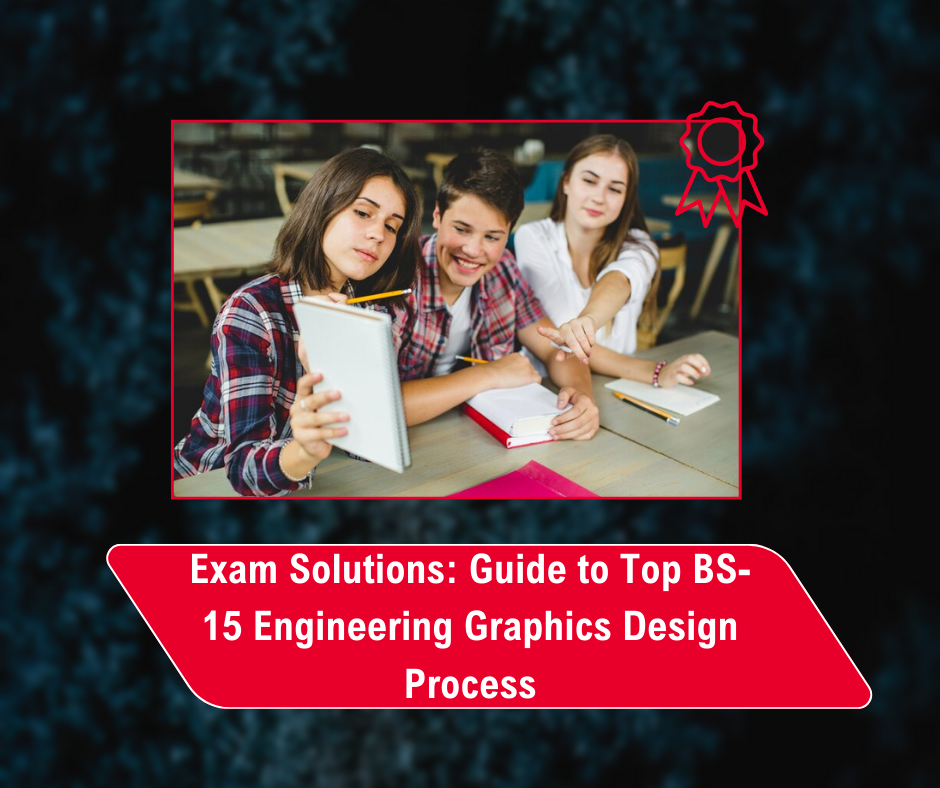Exam Solutions: Guide to Top BS-15 Engineering Graphics Design Process
Preparing for the BS-15 exam in engineering graphics design can be a challenging task. However, the “Exam Solutions: Guide to Top BS-15 Engineering Graphics Design Process” is an essential resource that can help candidates navigate through the complexity of the design process. This comprehensive guide provides detailed insights into the various stages of engineering design, essential tools, and techniques used in creating accurate engineering drawings and plans. Whether you’re a newcomer to engineering graphics or have some prior experience, this guide will equip you with the knowledge and skills needed to succeed in the exam.
Understanding the BS-15 Engineering Graphics Exam
The BS-15 engineering graphics exam assesses a candidate’s proficiency in essential areas such as geometric construction, technical drawing standards, the use of CAD (Computer-Aided Design) software, and the application of core engineering principles. To pass this exam, candidates must demonstrate not only theoretical knowledge but also practical skills in developing precise engineering drawings and solving design-related problems.

Key Topics Covered in the BS-15 Exam Include:
- Geometric Construction – The ability to create basic shapes and geometric figures is critical for producing accurate technical drawings. This involves understanding the principles of symmetry, proportions, angles, and dimensions.
- Technical Drawing Standards – This covers the established standards for producing engineering drawings, including line types, scales, notations, and symbols. Mastery of these conventions ensures clarity and precision in your designs.
- CAD Software Proficiency – Candidates must be able to use CAD tools effectively to develop and edit technical drawings. This includes understanding various commands and tools within the software, as well as managing layers, dimensions, and annotations.
- Engineering Principles – The ability to apply fundamental engineering principles, such as forces, stresses, material properties, and load calculations, is essential for solving complex design challenges.
The Engineering Graphics Design Process
The design process in engineering graphics is a step-by-step approach that involves transforming an idea into a workable design, which can then be manufactured or constructed. The “Exam Solutions: Guide to Top BS-15 Engineering Graphics Design Process” breaks down this process into several manageable stages, each with its own set of tools, techniques, and best practices.
- Problem Identification
- The first stage of the design process is identifying the problem or the need that the design aims to address. In the context of the BS-15 exam, this might involve interpreting an engineering brief or project description to determine what the design should achieve.
- Conceptual Design
- Once the problem is defined, the next step is to brainstorm and sketch possible design solutions. At this stage, candidates must consider various factors such as functionality, aesthetics, and feasibility. This step involves freehand sketching and may include creating multiple design iterations to explore different ideas.
- Technical Drawing
- After settling on a design concept, candidates will need to create detailed technical drawings that communicate the design’s dimensions, materials, and assembly instructions. This requires proficiency in drafting techniques, including orthographic projections, sectional views, and exploded views.
- CAD Modelling
- In modern engineering graphics, CAD software is an indispensable tool for creating accurate, digital versions of technical drawings. Candidates must be comfortable with basic CAD commands, as well as more advanced features like 3D modeling, parametric design, and simulations.
- Design Optimization
- Once a design has been created, it must be optimized to ensure it meets all the requirements while minimizing costs, material usage, and production time. This step may involve making adjustments to dimensions, tolerances, or material choices based on engineering analysis.
- Documentation and Presentation
- Finally, candidates must be able to present their designs clearly and professionally. This includes creating documentation such as bills of materials (BOM), assembly instructions, and cost estimates. Effective communication of your design is key to success in the BS-15 exam.

Benefits of Following the Exam Solutions Guide
The “Exam Solutions: Guide to Top BS-15 Engineering Graphics Design Process” provides several benefits to candidates who are serious about passing the exam:
- Step-by-Step Approach: The guide breaks down complex design processes into smaller, manageable steps, allowing candidates to progress through their learning with confidence.
- Focus on Core Competencies: Each section of the guide focuses on one of the core competencies required for the exam, ensuring that candidates are well-prepared in all areas.
- Practical Examples and Exercises: The guide includes real-world examples, sample drawings, and exercises that help candidates apply their knowledge to actual design problems.
- CAD Software Tutorials: The guide offers detailed tutorials on how to use CAD software effectively, from basic commands to more advanced features such as 3D modeling and rendering.
- Exam Tips and Strategies: In addition to technical content, the guide provides practical tips for approaching the exam, managing time, and avoiding common mistakes.

FAQ
What is the BS-15 exam in engineering graphics design?
The BS-15 exam is a standardized assessment for candidates looking to demonstrate their proficiency in engineering graphics design. The exam covers a range of topics, including geometric construction, technical drawing standards, CAD software usage, and the application of engineering principles in design.
What topics are covered in the “Exam Solutions: Guide to Top BS-15 Engineering Graphics Design Process”?
The guide covers key topics such as geometric construction, technical drawing standards, CAD software proficiency, and engineering design principles. It also provides step-by-step instructions for each stage of the engineering design process, from conceptual design to optimization and documentation.
How does the guide help in preparing for the BS-15 exam?
The guide helps by breaking down complex concepts into easy-to-understand steps. It includes practical exercises, sample problems, and CAD software tutorials to help candidates build the skills needed to succeed in the exam. Additionally, it offers exam strategies to improve time management and problem-solving abilities.
Is this guide suitable for beginners in engineering graphics design?
Yes, the guide is designed to accommodate both beginners and those with some experience in engineering graphics. It starts with the basics and gradually builds up to more advanced concepts, ensuring that all candidates can benefit from its content.
Do I need prior knowledge of CAD software to use this guide?
While prior knowledge of CAD software can be helpful, it is not strictly necessary. The guide includes comprehensive tutorials that walk you through the fundamentals of CAD usage, making it accessible to both beginners and experienced users alike.
Conclusion
The “Exam Solutions: Guide to Top BS-15 Engineering Graphics Design Process” is a valuable resource for anyone preparing for the BS-15 exam. With its detailed explanations, practical examples, and step-by-step approach, this guide equips candidates with the skills and knowledge needed to tackle the exam with confidence. Whether you’re new to engineering graphics or looking to refine your skills, this guide is designed to help you succeed in the BS-15 engineering graphics exam.
Explore our courses today and take the first step towards acing your exam with confidence and expertise

